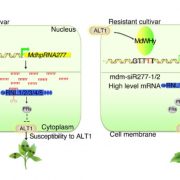
What a difference a base makes: A single nucleotide confers Alternaria resistance in apple ($) (Plant Cell)
Plant Science Research WeeklyGolden Delicious apples are particularly susceptible to the fungal pathogen Alternaria alternaria f. sp. mali. Zhang et al. have traced this susceptibility to a single nucleotide in the promoter of gene encoding a hairpin RNA (hpRNA), MdhpRNA277. This hpRNA produces small RNAs that selectivey target…

Phytophthora effector exploits host susceptibility factor NRL1 (PNAS)
Plant Science Research WeeklySome pathogen effectors disarm a plant’s immunity directly, for example through targeting resistance genes, whereas others work indirectly, through the plants own susceptibility (S) factors. He et al. provide an example of the latter. Previously, the authors showed that the Phytophthora infestans effector…

Best of both worlds: a free living insect with an endophytic-like feeding strategy (eLIFE)
Plant Science Research WeeklyEndophytic insects, which spend much of their life inside of plant tissues (e.g., leaf miners and gall-forming insects) are well-known for manipulating plant host physiology to their advantage, unlike free living herbivore insects whose game plan relies on their ability to move and find the most nutritious…
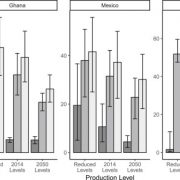
Carbon storage and land-use strategies in agricultural landscapes across three continents (Curr. Biol.)
Plant Science Research WeeklyAs we face increasingly odd weather patterns resulting from elevated CO2 emissions to the atmosphere, the question of how best to balance the need to produce food with the desire to minimize CO2 emissions becomes increasingly urgent. Williams et al. compared the effects of different types of land-use…
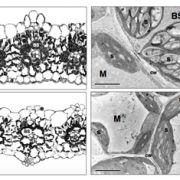
What We're Reading: August 3rd
WWR Full PostReview: MYBs drive novel consumer traits in fruits and vegetables
The MYB transcription factors, specifically the R2R3 family of MYBs, are closely associated with the regulation of anthocyanin biosynthesis. This easy-to-score trait made MYBs some of the earliest characterized plant transcription factors.…

Highlights from a one-day symposium on Risk assessment of Genetically Modified (GM) Crops
Blog0 Comments
/
Held at Centre of Excellence in Molecular Biology (CEMB). July 20, 2018
Riazuddin auditorium of CEMB is a graceful building which has been built recently for the conduction of scientific and social events. A one- day Symposium on “Risk assessment of GM crops” was successfully organized…
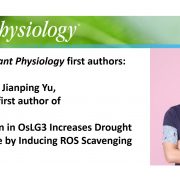
Recognizing Plant Physiology first authors: Jianping Yu
Plant Physiology, Plant Physiology: Author ProfilesJianping Yu, first author of Natural Variation in OsLG3 Increases Drought Tolerance in Rice by Inducing ROS Scavenging
Current Position: Postdoctoral fellow in Institute of Genetics and Developmental Biology, Chinese Academy of Sciences, Beijing, China.
Education: Ph. D., China Agricultural University
Non-scientific…
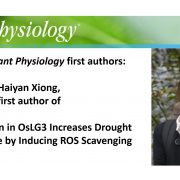
Recognizing Plant Physiology first authors: Haiyan Xiong
Plant Physiology, Plant Physiology: Author ProfilesHaiyan Xiong, first author of Natural Variation in OsLG3 Increases Drought Tolerance in Rice by Inducing ROS Scavenging
Current Position: Postdoctoral fellow in the Department of Plant Science, University of Cambridge, UK.
Education: Ph.D., China Agricultural University
Non-scientific Interests:…
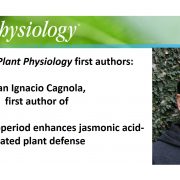
Recognizing Plant Physiology first authors: Juan Ignacio Cagnola
Blog, Plant Physiology, Plant Physiology: Author ProfilesJuan Ignacio Cagnola, first author of Long-day photoperiod enhances jasmonic acid-related plant defense
Current Position: Post-Doctoral position at IFEVA-CONICET, Faculty of Agronomy, University of Buenos Aires (Argentina).
Education: Doctor of Agronomic Science, Faculty of Agronomy, University…

